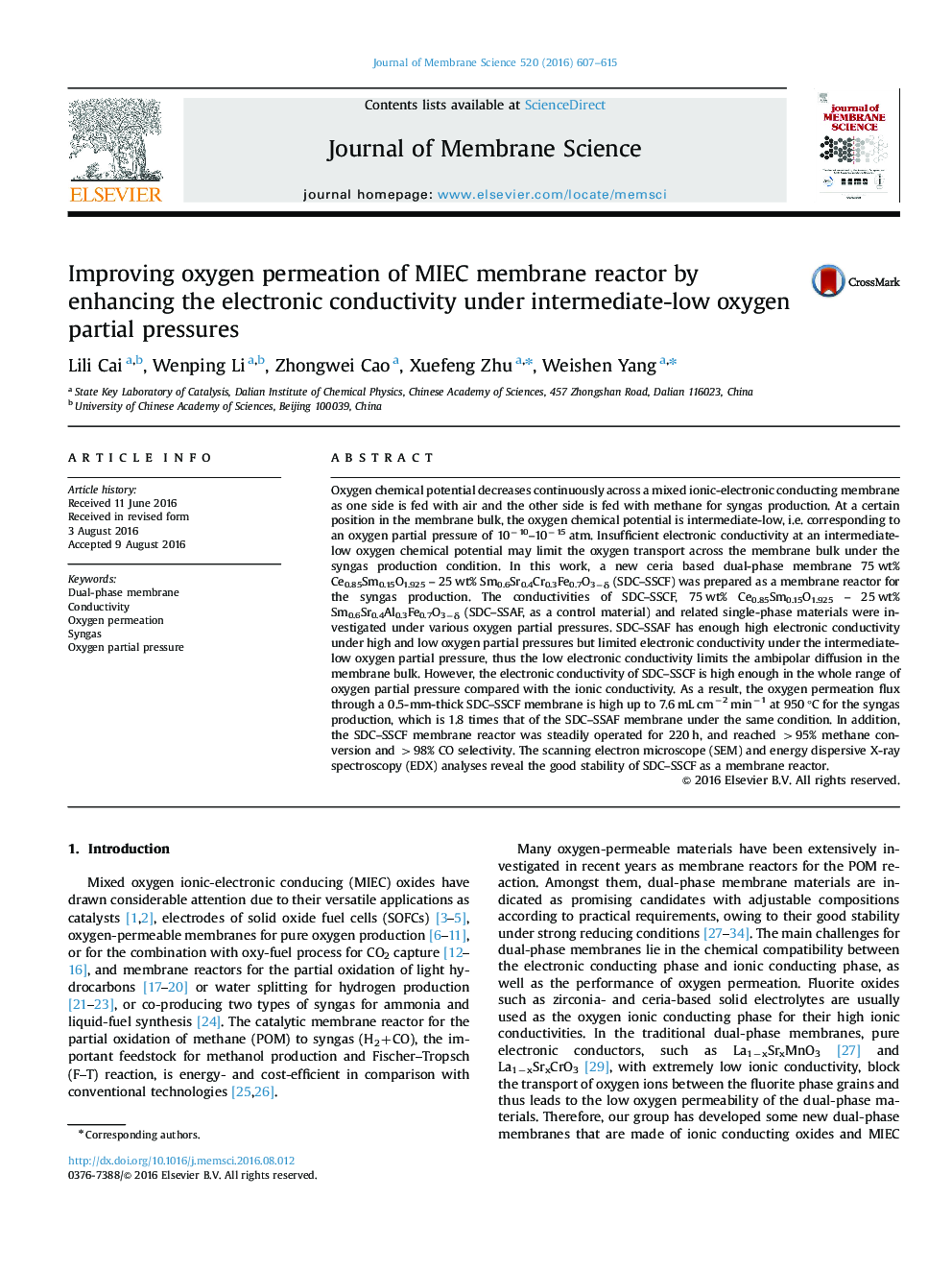| Article ID | Journal | Published Year | Pages | File Type |
|---|---|---|---|---|
| 7020413 | Journal of Membrane Science | 2016 | 9 Pages |
Abstract
Oxygen chemical potential decreases continuously across a mixed ionic-electronic conducting membrane as one side is fed with air and the other side is fed with methane for syngas production. At a certain position in the membrane bulk, the oxygen chemical potential is intermediate-low, i.e. corresponding to an oxygen partial pressure of 10â10-10â15 atm. Insufficient electronic conductivity at an intermediate-low oxygen chemical potential may limit the oxygen transport across the membrane bulk under the syngas production condition. In this work, a new ceria based dual-phase membrane 75 wt% Ce0.85Sm0.15O1.925 - 25 wt% Sm0.6Sr0.4Cr0.3Fe0.7O3âδ (SDC-SSCF) was prepared as a membrane reactor for the syngas production. The conductivities of SDC-SSCF, 75 wt% Ce0.85Sm0.15O1.925 - 25 wt% Sm0.6Sr0.4Al0.3Fe0.7O3âδ (SDC-SSAF, as a control material) and related single-phase materials were investigated under various oxygen partial pressures. SDC-SSAF has enough high electronic conductivity under high and low oxygen partial pressures but limited electronic conductivity under the intermediate-low oxygen partial pressure, thus the low electronic conductivity limits the ambipolar diffusion in the membrane bulk. However, the electronic conductivity of SDC-SSCF is high enough in the whole range of oxygen partial pressure compared with the ionic conductivity. As a result, the oxygen permeation flux through a 0.5-mm-thick SDC-SSCF membrane is high up to 7.6 mL cmâ2 minâ1 at 950 °C for the syngas production, which is 1.8 times that of the SDC-SSAF membrane under the same condition. In addition, the SDC-SSCF membrane reactor was steadily operated for 220 h, and reached >95% methane conversion and >98% CO selectivity. The scanning electron microscope (SEM) and energy dispersive X-ray spectroscopy (EDX) analyses reveal the good stability of SDC-SSCF as a membrane reactor.
Related Topics
Physical Sciences and Engineering
Chemical Engineering
Filtration and Separation
Authors
Lili Cai, Wenping Li, Zhongwei Cao, Xuefeng Zhu, Weishen Yang,
